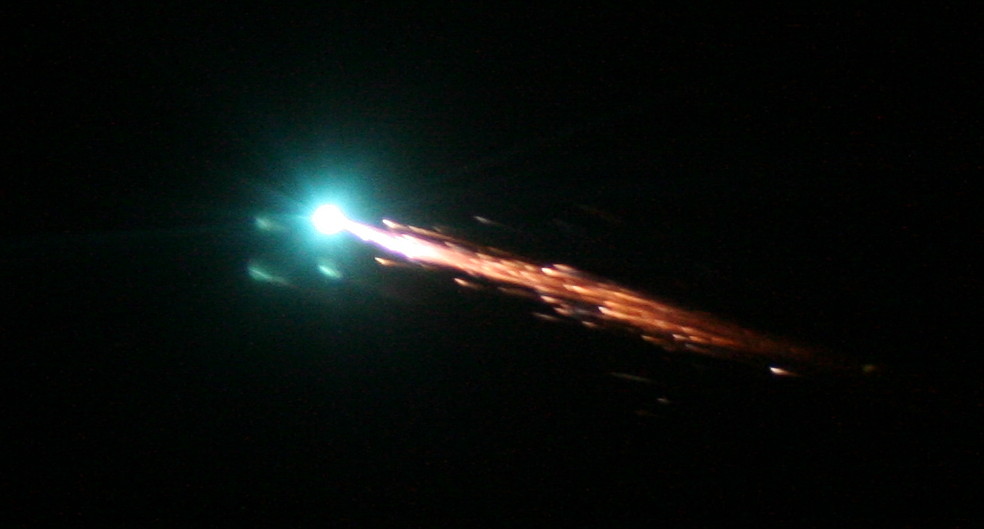Biggest Full Moon of the Year
It's no illusion. Some full Moons are genuinely larger than others and this Friday's is a whopper. Why? The Moon's orbit is an ellipse with one side 50,000 km closer to Earth than the other: diagram. In the language of astronomy, the two extremes are called "apogee" (far away) and "perigee" (nearby). On Dec. 12th, the Moon becomes full a scant 4 hours after reaching perigee, making it 14% bigger and 30% brighter than lesser full Moons we've seen earlier in 2008.
A perigee Moon brings with it extra-high "perigean tides," but this is nothing to worry about, according to NOAA. In most places, lunar gravity at perigee pulls tide waters only a few centimeters (an inch or so) higher than usual. Local geography can amplify the effect to about 15 centimeters (six inches)--not exactly a great flood.
Okay, the Moon is 14% bigger, but can you actually tell the difference? It's tricky. There are no rulers floating in the sky to measure lunar diameters. Hanging high overhead with no reference points to provide a sense of scale, one full Moon looks much like any other.
The best time to look is when the Moon is near the horizon. That is when illusion mixes with reality to produce a truly stunning view. For reasons not fully understood by astronomers or psychologists, low-hanging Moons look unnaturally large when they beam through trees, buildings and other foreground objects. On Friday, why not let the "Moon illusion" amplify a full Moon that's extra-big to begin with? The swollen orb rising in the east at sunset may seem so nearby, you can almost reach out and touch it.
But you still won't be able to see Armstrong's footprint. Not even Hubble can do that. The Moon is 384,400 km away (on average). At that distance, the smallest things Hubble can distinguish are about 60 meters wide. The biggest pieces of left-behind Apollo equipment are only about 9 meters across and smaller than a single pixel in a Hubble image.
What you will see is the world around you. This is both the brightest and (in the northern hemisphere) the highest-riding full Moon of the year. If you go outside around midnight it will be close to overhead and act like a cosmic floodlamp making the landscape absolutely brilliant, especially if there's snow. Full moons are always high during winter and, indeed, the solstice is right around the corner on Dec. 21st.
A fun experiment: Take a friend outside on Friday evening and ask if they notice anything unusual. Is the Moon big and bright enough to impress the unwary? Explain perigee later....
http://science.nasa.gov/headlines/y2008/09dec_fullmoon.htm



 .
.





 , se o céu tiver limpo vale mesmo a pena ir dár uma voltinha pela rua, não rão precisar de lanterna para nada
, se o céu tiver limpo vale mesmo a pena ir dár uma voltinha pela rua, não rão precisar de lanterna para nada


